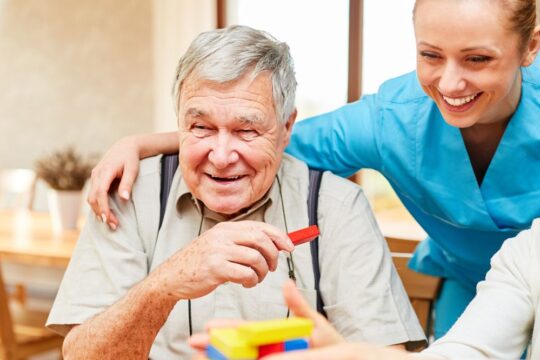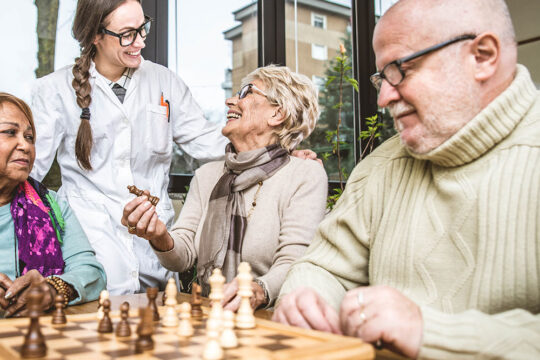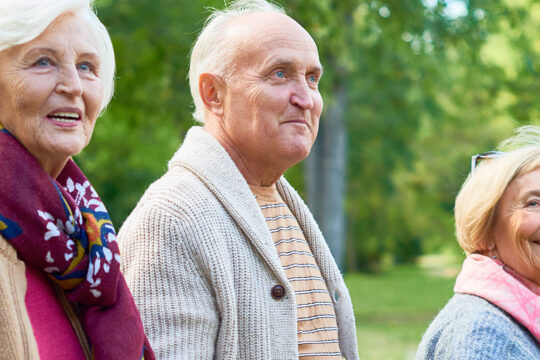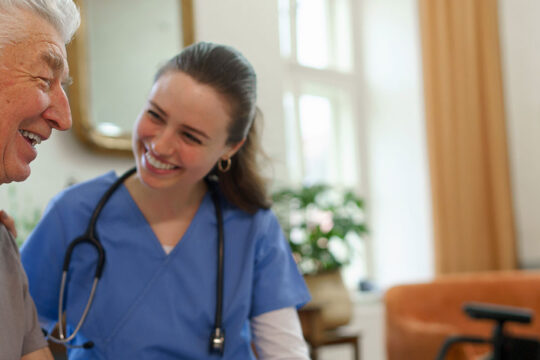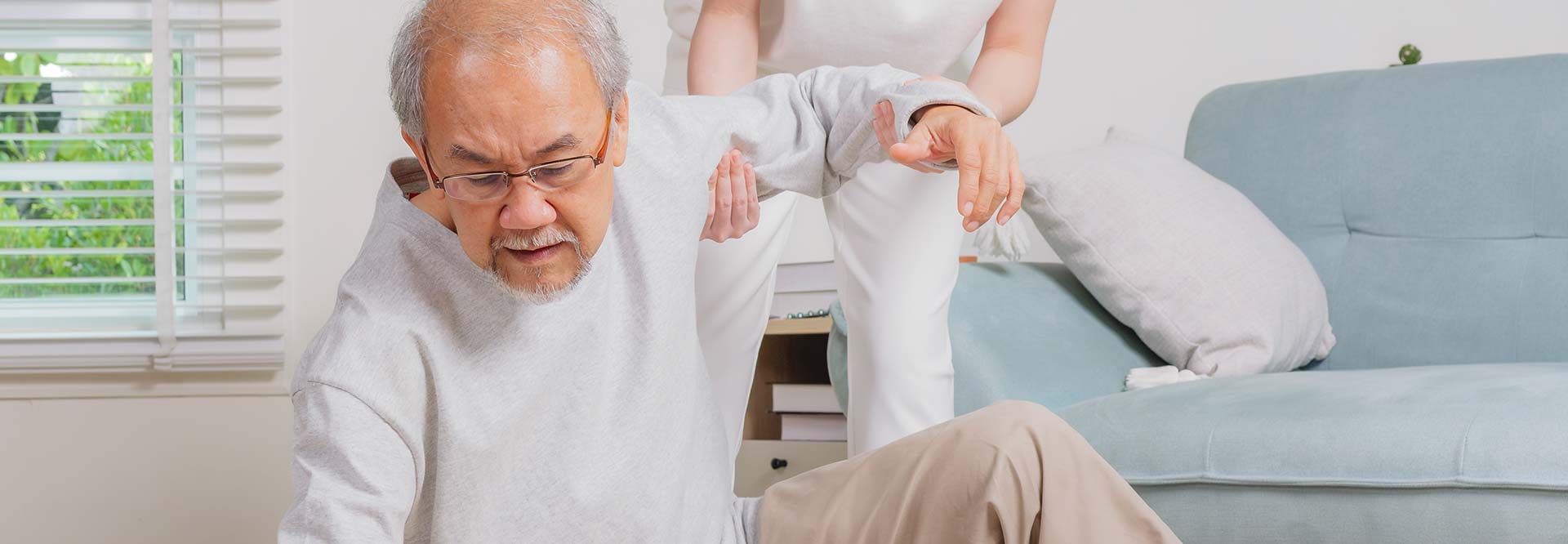
How to Safely Lift An Elderly Person
Lifting and assisting an elderly person from the floor, bed, or chair, requires knowledge, patience, and the right approach to ensure safety and prevent injuries. Caregivers face the risk of common injuries like back strains or muscle sprains. By preparing in advance, and using proactive safety measures, caregivers can effectively support their loved ones or patients while minimizing the risk of harm to both parties. At Stellar Care, our staff is trained 3 times a year on how to properly transfer someone from bed to wheelchair, or walker, and how to properly assist someone when they are falling.
How to Lift An Elderly Person Safely
Preparing to lift an elderly person or loved one
Caregivers often face the risk of injury when lifting or assisting elderly persons, due to the physical demands of the task. To prevent these injuries, use proper lifting techniques, and assistive devices. Common caregiver injuries from lifting an elderly person include:
- Back Injuries: The most frequent injury results from improper lifting techniques, which may lead to strains, sprains, or herniated discs.
- Shoulder Injuries: Caused by lifting or supporting weight, leading to rotator cuff injuries or impingement.
- Knee Injuries: Strains or sprains can occur from bending or twisting movements during lifting.
- Muscle Strains: Overexertion leads to muscle strains in the back, arms, legs, and neck.
- Wrist and Elbow Injuries: Repetitive or sudden movements result in tendonitis or bursitis.
- Hand and Finger Injuries: Transferring support can cause sprains, strains, or fractures in hands and fingers.
How to lift an elderly person off the floor
Lifting an elderly person off the floor requires careful attention to prevent injury to both the caregiver and the individual. Here’s how to do it safely:
- 1. Assess the Situation
Check if the elderly person is injured before attempting to lift them. If they are hurt or if you are unsure about how to lift an overweight elderly person off the floor, it’s best to call for medical assistance.
- 2. Prepare for the Lift:
Clear the area of any obstacles. Get close to the person, kneeling on one knee for stability.
- 3. Encourage Self-Help
Encourage the person to assist in the lift by using their arms to support themselves or by holding onto you.
- 4. Use Proper Lifting Technique
Place your arms under the person’s shoulders and knees, ensuring a firm but gentle grip. Keep your back straight and lift with your legs, not your back, to avoid strain.
- 5. Steady Lifting
Breathe out as you lift by straightening your legs, keeping the person’s body close to yours to maintain balance.
- 6. Assist to a Chair or Bed
Once lifted, carefully move the person to a stable sitting position on a nearby chair or bed for further assessment or rest.
- 7. Use Lifting Aids
If available, use lifting aids or devices designed for such situations. These can significantly reduce strain and increase safety for both parties.
- 8. Consider a Lift Plan
For homes with elderly residents, having a lift plan or practicing safe lifting techniques in advance can be beneficial. Training on the proper use of assistive devices is also recommended.
How to lift an elderly person from a chair
Similar to lifting a person off the floor, as a caregiver you’ll want to ensure it’s safe for both of you to lift an elderly person from a chair properly to prevent injuries. Safety is paramount. If the situation seems risky or if the caregiver doesn’t feel confident in their ability to lift the person safely, seeking professional help is advisable. In addition to the suggestions above about lifting an elderly person off the floor, when lifting a person off a chair, using safe lifting methods and practicing them beforehand is beneficial. Training on the proper use of assistive devices is also recommended.
How to lift an elderly person from bed
The key to safely lifting an elderly person from bed lies in preparation, clear communication, proper lifting techniques, and using any available aids to ease the process. If there’s ever any doubt about performing the lift safely, seek assistance. Here’s how to achieve a safe lift:
- 1. Prepare
Explain the process to the elderly person to ensure they understand. Remove pillows and ensure the bed is at a comfortable height, if adjustable. Clear the area around the bed of any obstacles.
- 2. Positioning
Have the person lie on their back and then help them roll onto their side facing you. Place their upper leg slightly bent forward, and support their back with a pillow if necessary for stability.
- 3. Assist to Sitting
Place one arm under their shoulder and your other arm under their knees. Gently roll them towards you while guiding their legs over the side of the bed, helping them into a sitting position on the edge of the bed.
- 4. Stabilize
Allow a moment for the person to gain balance sitting on the edge of the bed, especially if they experience dizziness.
- 5. Prepare to Stand
Stand close to the person, feet shoulder-width apart for stability. Encourage the person to use their hands to push off the bed if they are able, contributing to the lift effort.
- 6. Lifting Technique
Bend your knees while keeping your back straight. Place your arms under their arms and grasp their hands or wrists, or support them around the waist.
- 7. Lift to Stand
On a count of three, use your legs to stand up, lifting the person to a standing position alongside the bed. Maintain close contact to provide additional support and balance.
- 8. Transfer
Once standing, assist the person to a wheelchair, walker, or into a standing position, depending on their mobility level.
- 9. Safety Checks
Ensure the person is stable and comfortable before moving on to the next activity. Check for any discomfort or pain as a result of the lift.
How to lift an elderly person from a tub
Lifting an elderly person from a bathtub requires careful planning to ensure the safety of both the caregiver and the elderly person. Here’s how to do it safely:
- 1. Preparation
Ensure the bathroom floor is dry to prevent slipping. Remove obstacles that might hinder the process. Place non-slip mats in and out of the tub for safety.
- 2. Communicate
Clearly explain each step to the elderly person to prepare them for the lift. Encourage them to participate as much as they are able, which can reduce the strain on you.
- 3. Assistive Devices
Assistive devices like a bath lift, grab bars, or a transfer bench ease the process.
- 4. Positioning
Ask the elderly person to move close to the tub’s edge to reduce the lifting distance. If they are able, have them place their hands on the tub’s edges or on assistive devices for support.
- 5. Proper Lifting Technique
Stand with your feet shoulder-width apart for a stable base. Bend your knees and keep your back straight. If no assistive devices are used, place one arm under the person’s knees and the other behind their back, ensuring a secure hold.
- 6. Lift
Using your leg muscles, lift steadily and gently. Keep the person’s body close to yours to maintain balance. Avoid twisting your body while lifting; pivot with your feet to turn.
- 7. Transfer
Carefully move the person to a safe, stable sitting position on a chair or wheelchair positioned close to the tub. Ensure they are secure and comfortable before letting go.
How to properly assist an elderly person when they are falling
To lift an elderly person who has fallen, follow these safety precautions:
- Support Gently: Guide the fall without blocking.
- Protect the Head: Use arms to shield the head from impact.
- Lower Safely: Bend your knees to lower both of you gently.
- Slow the Descent: Brace their momentum and use your body to ease the fall’s impact.
- Check for Injuries: Assess their condition before moving them.
- Seek Help: Call for medical assistance if there are injuries.
- Assist Carefully: Help them up only if uninjured.
- Lift Properly: Use legs for lifting, keeping the person close.
- Report the Fall: Inform healthcare providers or family members.
- Call 911: If the person is unconscious or semi-conscious, reports severe pain, is unable to move or bear weight on a limb, has breathing difficulties or signs of heart attack or stroke, confusion, or paralysis, call 911.
Related Articles
Understand the symptoms and risk factors of ADHD and dementia. Explore the differences, and common misconceptions.
Do people with diabetes have a higher risk of dementia due to factors like insulin resistance, blood vessel damage, and inflammation?
Understand the symptoms and risk factors of ADHD and dementia. Explore the differences, and common misconceptions.
Confused about hospice or hospital care? Learn the essential differences and choose the best option for your needs.
Our Services
Memory Care
Club Stellar
Dining
Activities

A Memory Care Community
4518 54th Street • San Diego, CA 92115
Phone: (619) 287-2920
LICENSE #374603625
Copyright © Stellar Care | Website Development by blue media marketing, Inc.

